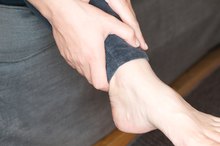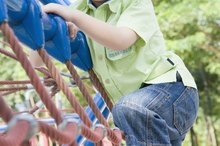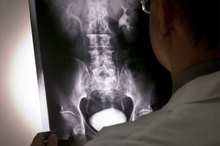Baby Saucer Vs. Walker
Modern parents have far more choices than ever when it comes to picking toys, activities and entertainment for their babies. Some of the most popular infant entertainment products include baby saucers and walkers, both of which are designed to allow baby to play independently while being supported upright 1. But while baby walkers and saucers may appear similar enough to be interchangeable, every parent should understand the vast difference between the two; your baby’s safety may depend on it 1.
Baby Saucer
Although the “ExerSaucer” is a specific type of stationary play center made by Evenflo, the term exersaucer is often used generically to describe any stationary entertainer made for babies. These play stations typically feature a fabric seat completely surrounded by a tray filled with various toys, teethers and activities. The seat allows baby to rotate himself and either sit or stand; and because the product has a secure “floor” base, it remains in one location and position.
Walker
Staircase Railings & Child Safety
Learn More
Like baby saucers, walkers usually feature a sit-or-stand seat surrounded by an activity tray but walkers also have wheels that allow babies to move around freely by pushing off the floor with their feet 1. While many a baby will delight in the newfound freedom she finds in a walker, this mobility puts her at risk for dozens of household injuries. A common misconception about walkers is that they help teach children to walk sooner; unfortunately, these products may actually delay walking, according to Dr. Alan Greene, Clinical Professor of Pediatrics at Stanford University School of Medicine 1.
Skill-Building
A stationary entertainer lets baby bounce, spin and play safely and is especially satisfying for a baby who cannot yet sit or stand on his own since it holds him upright. Walkers provide the same entertainment but can hinder a baby’s walking development by denying her the opportunity to scoot, crawl and pull up to a stand; all of these skills are part of the process of learning to walk and if a baby has mobility in her walker she may not work to move herself around otherwise 1.
Safety
Kickboxing for Young Girls
Learn More
Even in a well-babyproofed home and with adult supervision, a baby’s speed and ease of movement in a walker create enormous potential for accidents and injuries. According to the American Academy of Pediatrics (AAP), the most common baby walker injury is a fall down the stairs, which can cause bone fractures, severe head injuries and even death. Because baby saucers remain stationary, they are considered very safe, as long as adult supervision is used.
Recommendations
The AAP, the foremost trusted authority on children’s health and safety issues, strongly recommends against using baby walkers and suggests replacing them with stationary entertainers, play yards or high chairs 12. The dangers presented by baby walkers are so great that the AAP has called for a ban on the manufacture and sale of any walkers with wheels 1.
Related Articles
References
Writer Bio
Kristen Fisher is a freelance writer and editor with professional experience in both print and online media. She has published articles on a wide variety of topics including health, fitness, nutrition, home and food, and her work has appeared in "Connections Magazine" and on Lifescript.com. She graduated from the University of Arizona with a degree in psychology.









